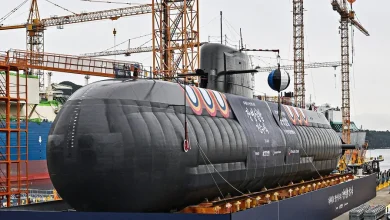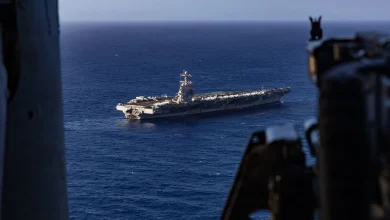
The International Atomic Energy Agency (IAEA) Chief, Rafael Grossi, on Wednesday said that important facilities at Iran’s Natanz nuclear plant suffered significant damage due to the Israeli strikes.
Speaking to Bloomberg TV, Grossi said Israel launched several attacks on Iranian nuclear facilities since the beginning of its military operation on Friday.
Natanz Nuclear Facilities
“First of all, a very important facility in Natanz was badly hit, with a full enrichment operating hall being destroyed completely above ground,” he said.
“Then, the electric substation and power infrastructure in this big facility also being taken out with a direct impact on a very important underground enrichment facility, which is also there,” Grossi added.
The IAEA’s Chief also noted that this happened as a result of the “sudden loss of power that caused immediate damage to these very delicate systems that the ultra-centrifuges that produce the enriched uranium are.”
Isfahan and Fordo
Grossi also said that the enrichment facility at Isfahan, which he describes as a “very important nuclear compound,” was repeatedly hit with a few buildings being affected.
However, the UN watchdog chief said he cannot be sure that the 409 kilograms stockpile of highly of enriched uranium kept underground is still safe because the nuclear sites are normally closed at times of war and the IAEA’s inspections teams, who are still in Iran, are not inspecting.
But he added: “We assume that we have not seen anything that would suggest the stockpile has been moved.”
Moreover, he noted that the Fordo nuclear site has not sustained a similar degree of damage, because it has the most important and sensitive parts situated underground deep in the mountains.
Centrifuge Production Facilities
The IAEA also said on Wednesday that two centrifuge production facilities in Iran, the TESA Karaj workshop and the Tehran Research Center, have suffered damage as a result of the Israeli strikes.
“At the Tehran site, one building was hit where advanced centrifuge rotors were manufactured and tested. At Karaj, two buildings were destroyed where different centrifuge components were manufactured,” the agency said in a statement.
Radiation Monitoring in Saudi Arabia
Amid mounting concerns over potential nuclear radiation from Iran’s enrichment facilities, Saudi Arabia’s Nuclear and Radiological Regulatory Commission (NRRC) reaffirmed that it is actively monitoring radiation levels in the Kingdom.
The NRRC monitors radiation levels through its National Network for Continuous Environmental Radiological Monitoring and Early Warning, which operates 240 stations across Saudi Arabia.
Following the flare-up of tensions between Iran and Israel, the NRRC confirmed that radiation levels in Saudi Arabia remain normal, stressing that the Commission proactively evaluates potential nuclear emergency scenarios and implements the necessary precautionary measures to protect the people and environment from radiation impacts.
Moreover, the NRRC noted that its proactive national capabilities to predict radioactive fallout cover the Gulf Cooperation Council (GCC) countries, emphasizing that its evaluation indicates that there is no need for activating nuclear emergency response plans.





